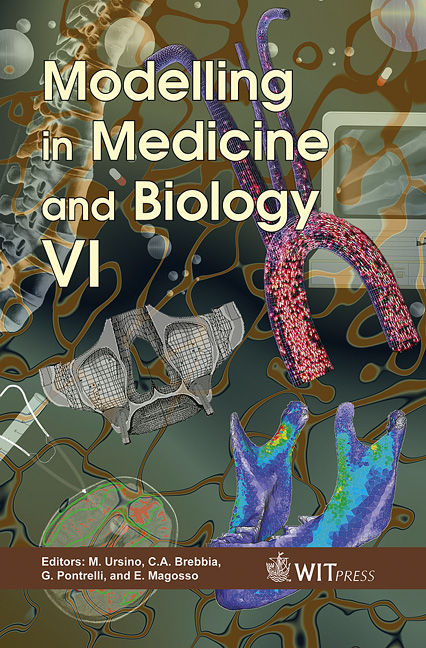Measurement And Calculation Of The Intramyocardial Stress
Price
Free (open access)
Transaction
Volume
8
Pages
9
Published
2005
Size
277 kb
Paper DOI
10.2495/BIO050161
Copyright
WIT Press
Author(s)
S. Mihailescu & R. M. Shoucri
Abstract
By using a servo-nulling mechanism and coated glass micropipettes (20-24 µm OD), intramyocardial stress (IMS) was measured at the base of the left ventricle in isolated working and nonworking cat hearts, perfused with Krebs-Henseleit buffer. Glass micropipettes were placed at various depths inside the left ventricular wall using a micropipette holder and manipulator. Calculation of the IMS is not a simple problem because of the complex structure of the active fibres in the myocardium. However a mathematical approach has been developed that reduces the complexity of this problem. It consists in using the concept of force per unit volume of the myocardium to model the components of the stress generated by the fibers in three orthogonal directions (assuming symmetrical contraction). Important relations are derived between the stress induced by the LVP and the stress induced by the active fibres in the passive medium of the myocardium. Keywords: measurement with micropipette, intramyocardial stress, active and passive stress in the myocardium, left ventricular elastance, active force per unit volume of the myocardium, stress-strain relation in the myocardium. 1 Introduction Contraction of myocardial fibers creates the hydraulic pressure necessary for displacement of blood inside the cardiovascular system. A side effect of left ventricular contraction is the compression of its coronary vessels, which results in a fasic reduction of its coronary arterial flow [1]. Systolic closure of left
Keywords
measurement with micropipette, intramyocardial stress, active and passive stress in the myocardium, left ventricular elastance, active force per unit volume of the myocardium, stress-strain relation in the myocardium.





